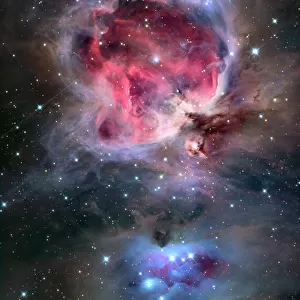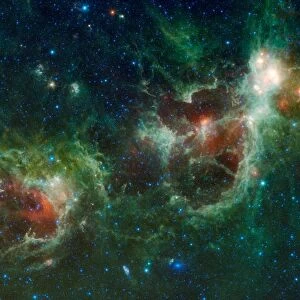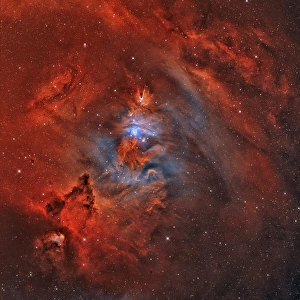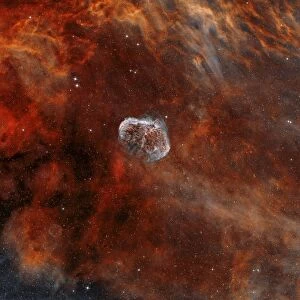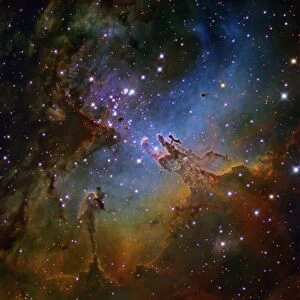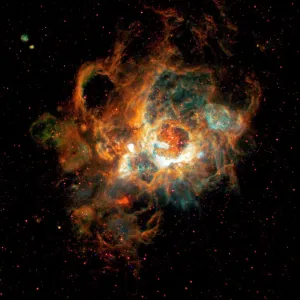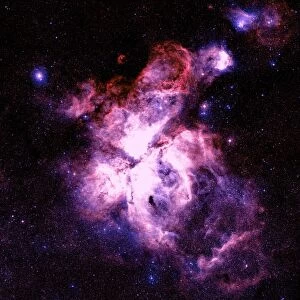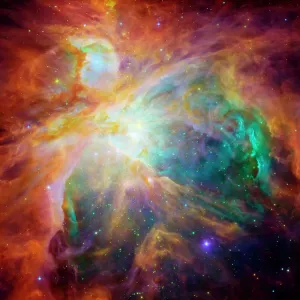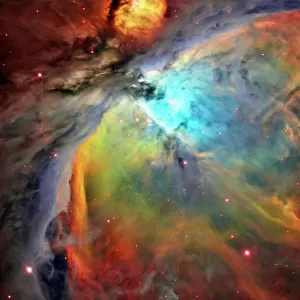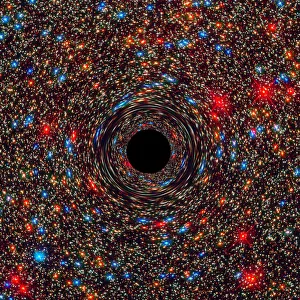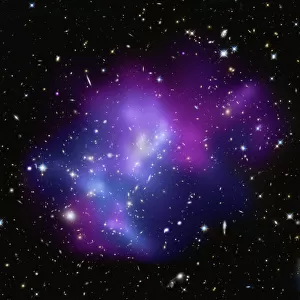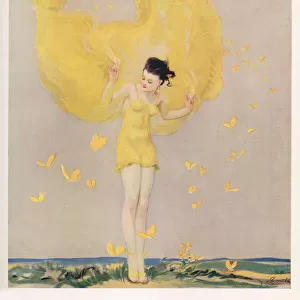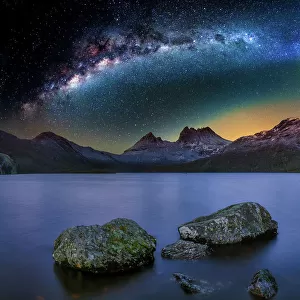Home > Animals > Insects > Butterflies > Small White
The Butterfly Nebula
![]()

Wall Art and Photo Gifts from Stocktrek
The Butterfly Nebula
July 27, 2009 - NGC 6302, also known as the Bug Nebula or Butterfly Nebula. Butterfly Emerges from Stellar Demise in Planetary Nebula NGC 6302ašašWhat resemble dainty butterfly wings are actually boiling cauldrons of gas heated to more than 36, 000 degrees Fahrenheit. The gas is tearing across space at more than 600, 000 miles an hour.ašašA dying star that was once about five times the mass of the Sun is at the center of this fury. It has ejected its envelope of gases and is now unleashing a stream of ultraviolet radiation that is making the cast-off material glow. This object is an example of a planetary nebula, so-named because many of them have a round appearance resembling that of a planet when viewed through a small telescope.ašašNGC 6302 lies within our Milky Way galaxy, roughly 3, 800 light-years away in the constellation Scorpius. The glowing gas is the staras outer layers, expelled over about 2, 200 years. ašašThe central star itself cannot be seen, because it is hidden within a doughnut-shaped ring of dust, which appears as a dark band pinching the nebula in the center. The thick dust belt constricts the staras outflow, creating the classic bipolar or hourglass shape displayed by some planetary nebulae.ašašThe image also shows numerous finger-like projections pointing back to the star, which may mark denser blobs in the outflow that have resisted the pressure from the stellar wind.ašašThe nebulas outer edges are largely due to light emitted by nitrogen, which marks the coolest gas visible in the picture. WFC3 is equipped with a wide variety of filters that isolate light emitted by various chemical elements, allowing astronomers to infer properties of the nebular gas, such as its temperature, density, and composition.ašašThe white-colored regions are areas where light is emitted by sulfur. These are regions where fast-moving gas overtakes and collides with slow-moving gas that left the star at an earlier time, producing shock waves in the gas (the bright white edges on the sides facing the central star). The white blob with the crisp edge at upper right is an example of one of those shock waves.ašašFilters that isolate emissions from oxygen, helium, hydrogen, nitrogen, and sulfur from the planetary nebula were used to create this composite image
Stocktrek Images specializes in Astronomy, Dinosaurs, Medical, Military Forces, Ocean Life, & Sci-Fi
Media ID 13058855
© Stocktrek Images
Beauty Bright Celestial Colorful Cosmic Dust Emission Nebula Interstellar Clouds Luminous Nebula Nebular Nebulosity Nebulous Planetary Planetary Nebula Scorpius Stellar Vibrant Butterfly Nebula View From Space
FEATURES IN THESE COLLECTIONS
> Animals
> Insects
> Butterflies
> Small White
> Animals
> Insects
> Related Images
> Science
> Space Exploration
> Milky Way
MADE IN AUSTRALIA
Safe Shipping with 30 Day Money Back Guarantee
FREE PERSONALISATION*
We are proud to offer a range of customisation features including Personalised Captions, Color Filters and Picture Zoom Tools
SECURE PAYMENTS
We happily accept a wide range of payment options so you can pay for the things you need in the way that is most convenient for you
* Options may vary by product and licensing agreement. Zoomed Pictures can be adjusted in the Cart.


